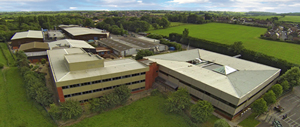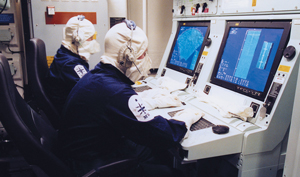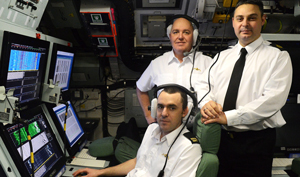Howard Wheeldon shares his thoughts on his visit to Templecombe office
Howard Wheeldon, London 2016

As a recognised leader in defence electronics technology, the size and scope of Thales UK operations is easy to overlook. Thales plays a significant role in UK defence and the UK economy in terms of technology and design, exports and retention of important engineering and electronics based skills.
Over the coming months I will be looking at Thales UK based activities including those of Air Operations Systems & Services, Transportation, for which Thales is one of the largest and most respected European suppliers of signalling, train protection and warnings systems, plus other activities including Training and Simulation, Air Traffic Management, Satellite Communications and Network & Cyber Systems.
Thales is well known for its extensive range of capability produced for the defence maritime sector. The Templecombe based operation is a centre of excellence for the production of sonar, antenna and acoustic equipment design and manufacturing. A sizable and well invested operation producing equipment to be found on almost all Royal Navy ships and submarines, and those of many other navies internationally. Good communication is what makes for good business opportunities and I was particularly impressed to see, in order to ensure no opportunities are lost which might better support the end customer, how employees work closely with other Thales operations.
Although the roots of what comprises a large part of the Templecombe based Thales operation date back quite a while, the organisation began life in 1965 as the Plessey Marine/Plessey Marine Research Unit. Through a string of complicated consolidation based mergers plus a handful of acquisitions, including some that involved BAE Systems, Ferranti, the former GEC Marconi and others, the Templecombe operation together with a separate Cheadle Heath based operation comprises the bulk of Thales Maritime.
The Thales Maritime portfolio extends through a vast number of different capabilities, including airborne surveillance & control systems, unmanned systems, naval communications & antennas, electronic warfare, optronics, navy weapon systems plus a variety of simulation and training related solutions.

The ability to learn more about the huge variety of Thales UK produced sonar systems, used by Royal Navy plus other surface warship capability, mine-warfare vessels, submarines and also airborne sonar products, has from a personal perspective filled an important gap in my knowledge. What the company produces is mission critical capability that must be able to operate in a diverse and dangerous conditions. Deployed on-board during the life of the ship or submarine; capability, reliability, efficiency and durability are hugely important aspects. Low maintenance costs based on lean maintenance routines and a continuous obsolescence containment programme are all important aspects emphasised in Thales.
Key features of surface ship sonar are; high performance, long range tactical low frequency passive and active search and surveillance capability, multi-static transmission/reception capability and variable depth, designed to exploit propagation together with high bandwidth for littoral operations. These are sophisticated pieces of equipment capability at its best, which has gone through continuous improvement over the years.
Minehunting is an area that the Royal Navy has long been recognised for as a world leader, and the UK has a large fleet of minehunting vessels equipped with two different versions of Thales designed sonar systems. Sonar 2093 is a high resolution variable depth minehunting sonar system in service with different navies around the world. Sonar 2193 is a hull-mounted high frequency sonar system which emits an acoustic signal containing a wide range of frequencies to greatly increase range and accuracy at which mines can be detected. Simple to install, Sonar 2193 provides high resolution imaging and computer aided detection.

Thales has a long history in anti-submarine warfare systems and can boast that it holds 50% of the market for submarine sonars, and has provided equipment to more than 140 conventional and nuclear powered submarines in service, with 23 navies around the world. The company specialises in building comprehensive, cohesive and integrated solutions that can provide submarines with all-round situational awareness together, with the ability to detect, locate and classify all types of threat at short, medium and long range, across a broad spectrum of frequencies. Submarine sonar suites, incorporating high-performance acoustic sensors, integrated processing electronics and advanced user interfaces, are based on open, interoperable architecture to accommodate future capability and minimise cost of ownership.
The company is also a founding member of the Aircraft Carrier Alliance which alongside BAE Systems, Babcock International and MOD partners is responsible for delivering the two Queen Elizabeth Class aircraft carriers for the Royal Navy.
In summary, Thales’s role as an important producer of UK sovereign capability cannot be understated. The company continues to invest in its range of products and plays a prominent role not only in maintaining UK engineering skills but also in defence exports. The company is deserving of the success it has already achieved and that is clearly set to continue.